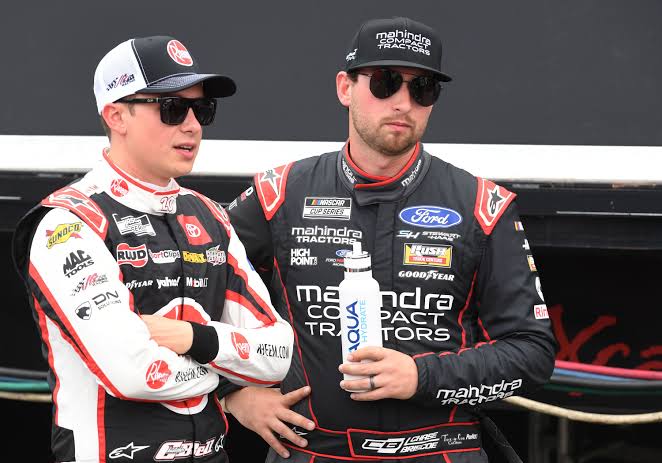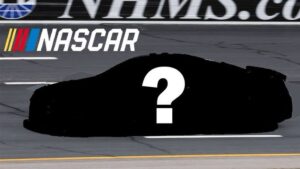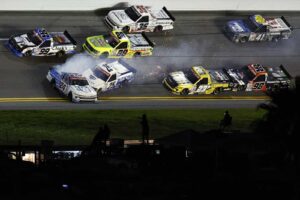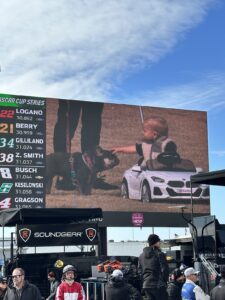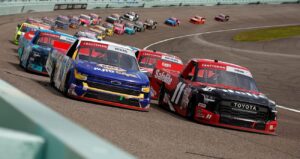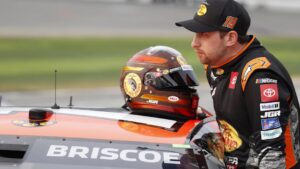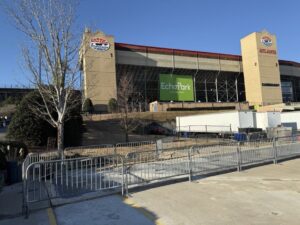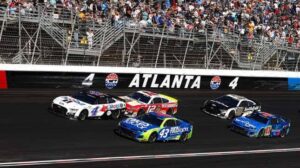The NASCAR race at Talladega Superspeedway saw lap 183 come under scrutiny following a massive crash involving 28 vehicles.
This collision ignited debate over NASCAR’s Damaged Vehicle Policy, drawing attention from key stakeholders and affecting major playoff contenders.
At the center of the controversy is NASCAR’s Damaged Vehicle Policy, which mandates that drivers who leave their cars during a race are disqualified from re-entering.
This rule left drivers like Chase Briscoe and Chase Elliott stranded in the infield grass, forced to stay in their cars to avoid automatic disqualification.
Briscoe’s crew chief, Richard Boswell, told him to remain in place, an experience Briscoe described as “the most disorganized deal in my life.”
As chaos ensued, drivers and their teams attempted to return their cars to pit road for repairs.
NASCAR’s handling of the red flag situation added to the confusion when it lifted the red flag without moving the pace car forward, leaving drivers unsure of what was happening.
Christopher Bell was among those voicing frustration about the situation.
Joey Logano described the aftermath, critiquing recent car modifications, including a system meant to raise the car to address flat tire issues.
“I didn’t feel it go up, but I had some stuff broken too, so it’s kind of hard to say if the lift system worked or not.
But it’s kind of comical. I get out of the car, and I just see a bunch of cars…everyone’s just sitting there hoping they can roll a little bit. It’s just goofy.”
Echoing these sentiments, Josh Berry offered a sarcastic take on the policy: “All I know, is that all those cars parked in Turn 3 better not get towed to pit road, buddy.
Because that’d be breaking the Damaged Vehicle Policy.”
“F***ing 42 car is out there doing burnouts, slinging rubber all over the safety workers trying to get going. But if you have four flat tires and you get towed to pit road, you’re done, right?”
NASCAR now faces the challenge of balancing safety protocols with practical race management to prevent similar confusion in the future.
As discussions continue and feedback from drivers and teams is gathered, adjustments to the policy may be considered.
